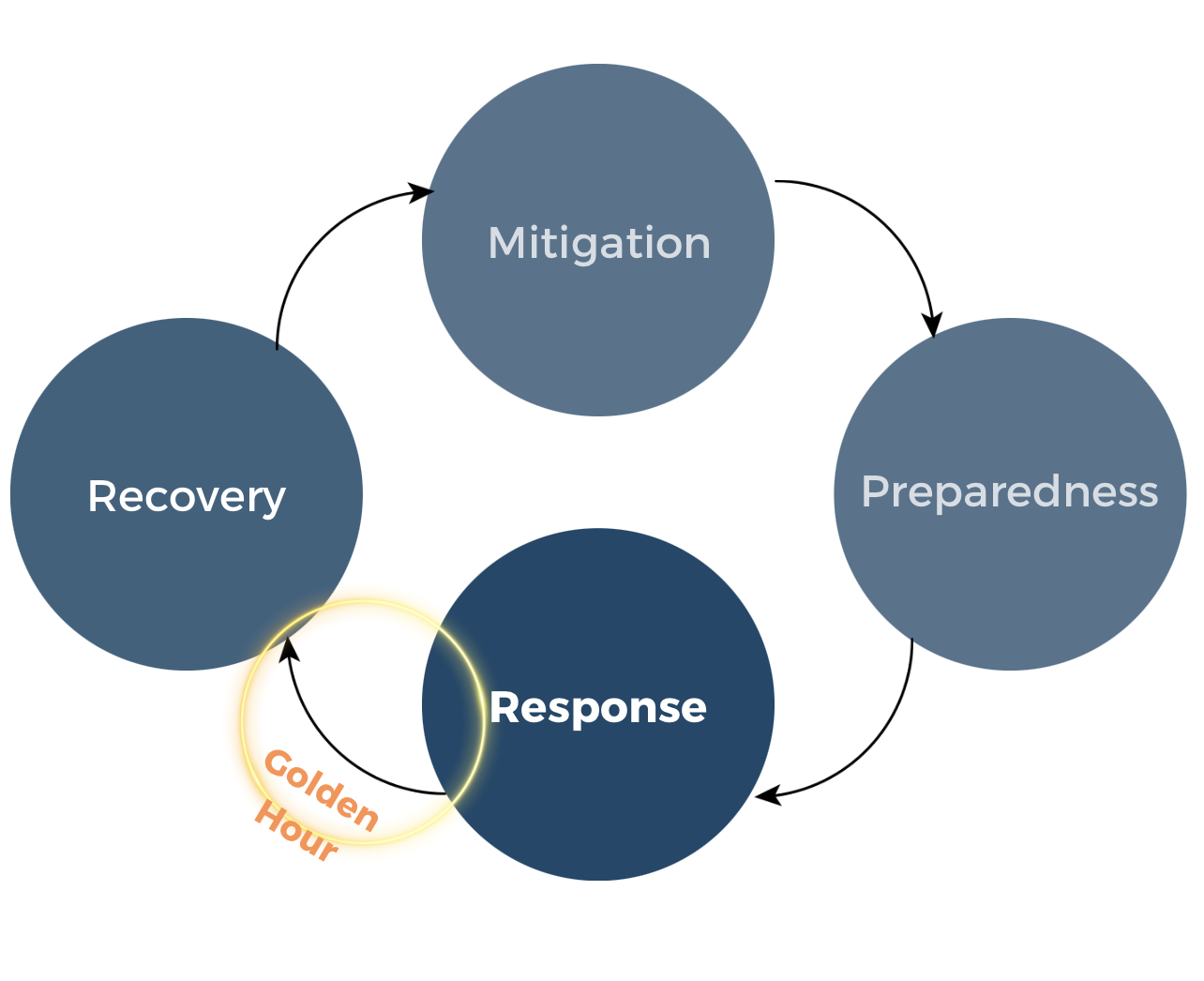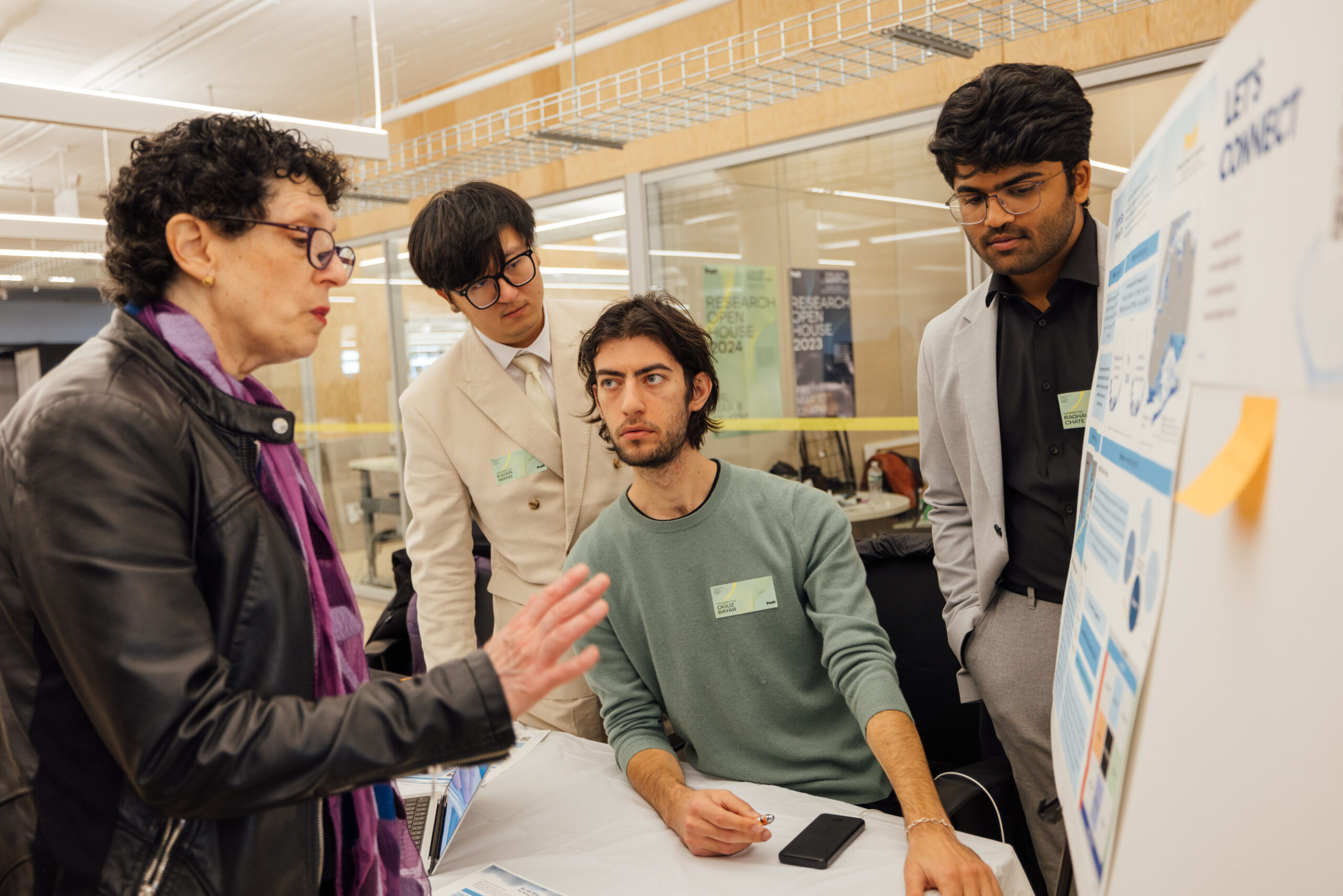The Rockaways, a coastal community in Queens, New York City, stands on the front lines of climate change. As tides rise, underserved and geographically vulnerable communities like those in The Rockaways are at particular risk, facing disparities in access to aid and resources during flood events. In the aftermath of Superstorm Sandy in 2012, recovery support reached The Rockaways, one of the most severely impacted areas in New York, slowly and sporadically. Between the onset of a disaster like Sandy and the arrival of federal assistance is a critical time known as the “golden hour”; actions during this limited time can make or break a community’s immediate safety and capacity for long-term recovery.
Four students in Pratt’s Creative Enterprise Leadership department’s international graduate program in design management have honed in on this critical golden hour for their research project, The Rising Tide. Composed of Oğuz Bayar, Raghavendra Chate, Mrityunjay Misra, and Kaixin Wang (all MPS Design Management ’24) and advised by Adjunct Associate Professor of Creative Enterprise Leadership Denise Tahara, the team (called North Star) is working to create a strategic decision-making framework to help The Rockaways respond to, and rebuild after, coastal flooding.
The project, conducted over the course of a full academic year, has resulted in the First-Order Response Community Engagement (FORCE) framework, which knits together theoretical knowledge and real-world applications. FORCE prioritizes meeting the nuanced needs of the community—ranging from basics such as shelter, food, clean water, and medical assistance to crucial, yet often overlooked, psychological, cultural, and social support.
To best prepare and protect residents during the golden hour, the FORCE Framework provides a road map for key decisions. It starts with the establishment of a community-created guiding coalition who will then engage community members in identifying resources, capabilities, vulnerabilities, trusted messengers, and leaders to guide the community through this process and through the crisis. It includes a series of decision trees to direct the planning, preparation, and response, based on the identified community-specific needs, in service of building a more resilient community.

The Process
The team chose to focus on The Rockaways as a pilot project after identifying a need for greater attention, support, and resources for the geographically isolated peninsula.
From there, they embarked on a deeply research-based and collaborative process, which included speaking to subject-matter experts who have worked with communities facing sustainability challenges, delving into a wide variety of government resources, and collaborating with the Rockaway Initiative for Sustainability and Equity (RISE), a not-for-profit organization that runs civic engagement and youth development programs in The Rockaways. It was important to North Star to partner with an established organization fully embedded within the community and informed on its distinct needs. RISE’s long and ongoing history of serving their neighbors provided an invaluable knowledge base for the North Star team. “Developing and implementing solutions is an iterative process that requires constant feedback and validation from the community and experts,” said Chate.
The team utilized methods such as STEEPLEAD, a strategic management tool that helps organizations understand their operating environment and pursue informed strategic decisions, and the 4D version of the Double Diamond process, which includes four phases: Discover, Define, Design, and Deliver.
The project builds on existing disaster preparedness, response, and mitigation research by organizations like RISE and FEMA, as well as prior work coming out of Pratt Institute’s Creative Enterprise Leadership Department. Where The Rising Tide diverges from previous efforts is its emphasis on the golden hour and use of the Mutually Exclusive Collectively Exhaustive (MECE) approach, a framework at the core of decision analysis.
The team aims to make it clear and easy for community members to leverage existing capabilities and resources to respond quickly to crises before outside aid can arrive. They hope that a framework like FORCE can prepare decision-makers to act quickly and effectively during these crucial moments.

Leveraging Their Learning
Throughout their process, the team had access to Pratt’s Creative Enterprise Leadership network, including a diverse array of subject experts, professors, industry leaders, professionals from the Association for Managers of Innovation (AMI), and representatives from RISE. “This has been instrumental in the team’s success by providing the tools, knowledge, and support needed to make a meaningful difference in the communities we serve,” said Tahara.
The student team members also credit the program with helping them understand and apply learnings around community engagement, practical models and frameworks, and communication and presentation skills. “The program’s emphasis on empathy, innovation, and strategic thinking prepared me to tackle complex challenges and drive positive change in underserved communities,” said Wang.
Their learnings from this project will also inform their future professional and personal endeavors. “Our engagement with The Rockaways community has fostered a sense of social responsibility and a desire to continue contributing to resilience-building efforts,” said Misra. “And personally, this project has solidified my passion for community-driven initiatives and the power of interdisciplinary collaboration.”
Charting What’s Next
Although The Rising Tide is still in its early phases, the team has already presented their work at Pratt’s Research Open House and an AMI Presentation, and they have been chosen to share their work at the New York State Public Health Partnership Conference and an American Institute of Architects (AIA) meeting in New York in May.
The next phase of the project will involve working with the community to ensure that the framework is “tailored to their exact needs,” said Bayar. “This is a challenge within the scope of change management, which is an integral part of sharing our tool.”
Following the completion of their FORCE framework, the team plans to present their work to RISE and other community members, elicit feedback, and make adjustments before sharing it more widely—possibly even adapting it to support vulnerable communities beyond New York City. While more research and testing are still necessary, the team continues to pursue its goal, stated in its project brief, of “fostering community engagement, optimizing communication, and empowering participation” in service of “a more resilient and equitable future for all.”
